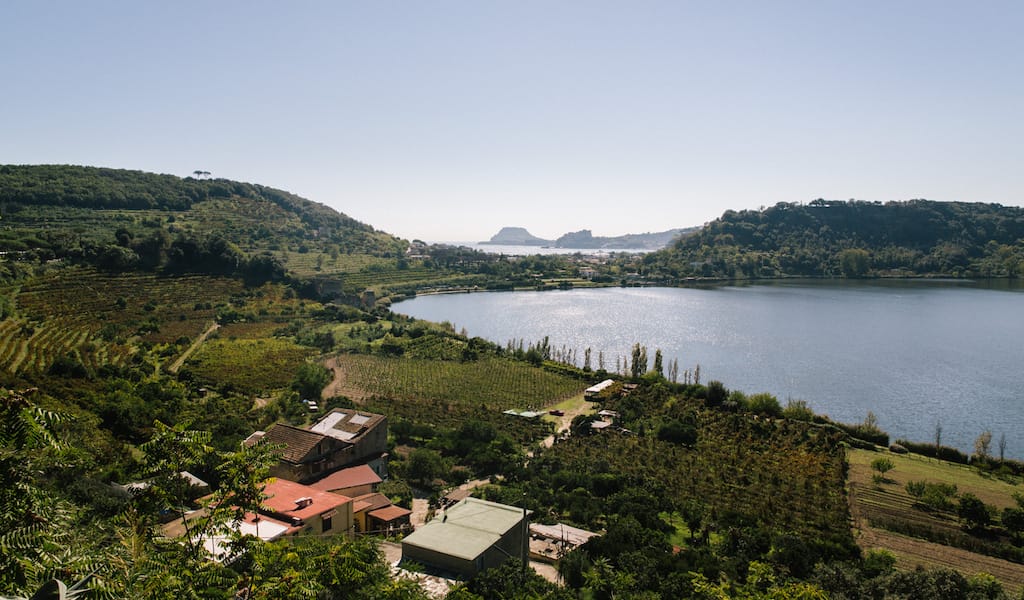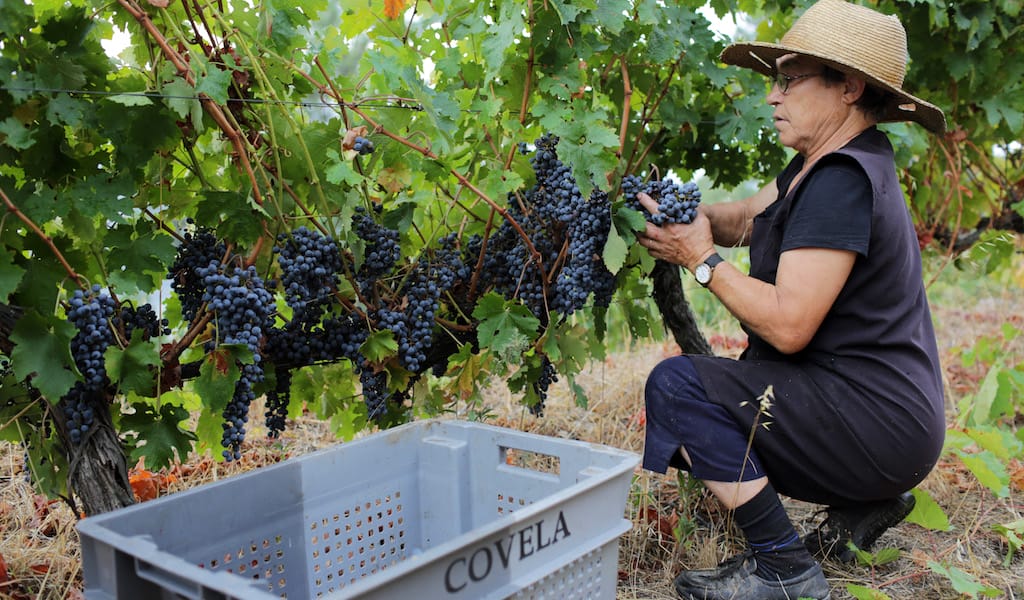The official cold blew in last month. Winds pierced thick cotton clothing through to the skin, into the body and further into the bone while we were driving in the open rickshaw, after the sun slipped down. Then it rained and thundered, the kind that makes one jump with the clap. When the morning air hit the airways, balminess laced with pollution infiltrated the atmosphere. To get and stay warm is work here. We seek out the afternoon sun to heat our bodies and dry our clothes. Another way to keep the chills at bay is to ensure a supply of dense foods and hot liquids.
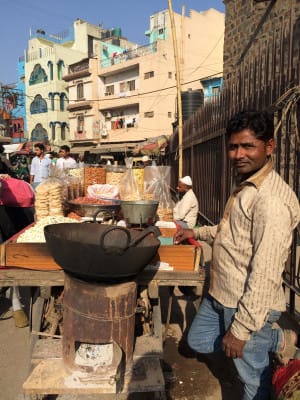 Subcontinental folks excel at snack foods, all year round, and the winter season is no exception. Movable carts, like Muhammad Asif’s at the Turkman Gate entrance, pack one type of dry street food. “These are our winter foods,” says the unassuming Asif Bhai (brother). “I don’t make them myself; I buy my goods at the Sadar Bazaar,” the wholesale market located just northwest of Old Delhi across the railway tracks.
Subcontinental folks excel at snack foods, all year round, and the winter season is no exception. Movable carts, like Muhammad Asif’s at the Turkman Gate entrance, pack one type of dry street food. “These are our winter foods,” says the unassuming Asif Bhai (brother). “I don’t make them myself; I buy my goods at the Sadar Bazaar,” the wholesale market located just northwest of Old Delhi across the railway tracks.
Asif sells his inexpensive and nutrient-dense delights all over the city. His customers range from the poor to the very rich, all craving a way to stave off cold in the sunless gusts. On his cart, he carries two types of sweet chikki, one made with peanuts, peanut oil and refined sugar and the other with ghee and gur, unrefined cane sugar; two types of rewari, one with whole sesame seeds and refined sugar, the other with gur; two types of gajak, one with ground sesame seeds and refined sugar and the other with gur; roasted chana, whole chickpeas; mirchi namkeen, a spicy, salty mix with chana flour as its base; and warm, salted peanuts. 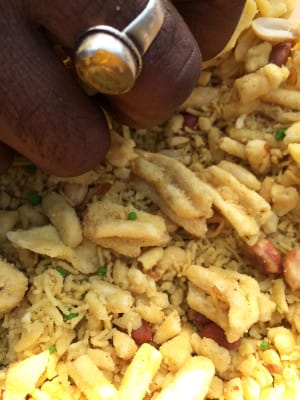 He rolls with an open-roasting kadhai (pan). The pan is heated and filled with salt turned black from constant roasting. Packed in small bags made from newspapers, the roasted peanuts radiate momentary warmth in the hand, and the salt and crunch on the tongue stave off the hunger and chills till the next stop.
He rolls with an open-roasting kadhai (pan). The pan is heated and filled with salt turned black from constant roasting. Packed in small bags made from newspapers, the roasted peanuts radiate momentary warmth in the hand, and the salt and crunch on the tongue stave off the hunger and chills till the next stop.
Tea is dark and strong. For most, tea is liquid fortification in the winter. Not far from the entrance to Turkman Gate is Muhammad Nissar’s neighborhood old-style tea and butter bread stall. Munawar, the tea maker, juggles several hot kettles, a pot of cooking milk and tea, another of simmering milk and 10 to 15 glasses at a time. He dispenses, from on high, a stream of steaming milk. The stream plops and splashes back into the white pool amidst a gray background.
Munawar keeps the simmer from overflowing with the cadenced tap-tap-tap of the sieve on the cooking pot. He then scrapes around and around the inside of the pot to unstick the veneer of caramelized milk-sugar-tea from the sides and taps-taps-taps it back into the pot. All boils together. The consistency thickens, flavor darkens and taste intensifies. He tops it all off with frothy milk and serves it in elegant glass tumblers, 500 times a day. This is tea for the hardy.
(photos and video by Sarah Khan)
 October 15, 2019 Wine Harvest 2019
October 15, 2019 Wine Harvest 2019
Imagine the most extraordinary location for a vineyard that you can. Got an image in […] Posted in Naples October 14, 2019 Wine Harvest 2019
October 14, 2019 Wine Harvest 2019
It’s a crisp and cold winter morning in Alentejo. We are in Mora, a one-and-a-half-hour […] Posted in Lisbon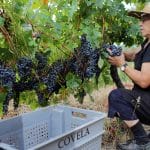 October 11, 2019 Wine Harvest 2019
October 11, 2019 Wine Harvest 2019
It is impossible not to look at the history of Quinta de Covela, a winery in Portugal’s […] Posted in Porto
Published on January 19, 2015
Related stories
October 15, 2019
NaplesImagine the most extraordinary location for a vineyard that you can. Got an image in mind? Well, we think Cantine dell’Averno, a four-hectare vineyard in Pozzuoli, has it beat: Not only are its vines growing inside the caldera of a volcano that is theoretically still active, but they also surround the ruins of a Roman…
October 14, 2019
LisbonIt’s a crisp and cold winter morning in Alentejo. We are in Mora, a one-and-a-half-hour drive from Lisbon, to visit Susana Esteban’s winery, a very simple adega where her award-winning wines are made. Susana welcomes us at the door and leads us inside, where, sitting among the barrels, we taste her wines. They leave a…
October 11, 2019
Porto | By Cláudia Brandão
PortoIt is impossible not to look at the history of Quinta de Covela, a winery in Portugal’s Douro Verde region that has faced misfortune, gotten some lucky breaks and survived tricks of fate, as a masterpiece of literature, one that could easily be adapted to the cinema. In fact, the area around the winery already…













































